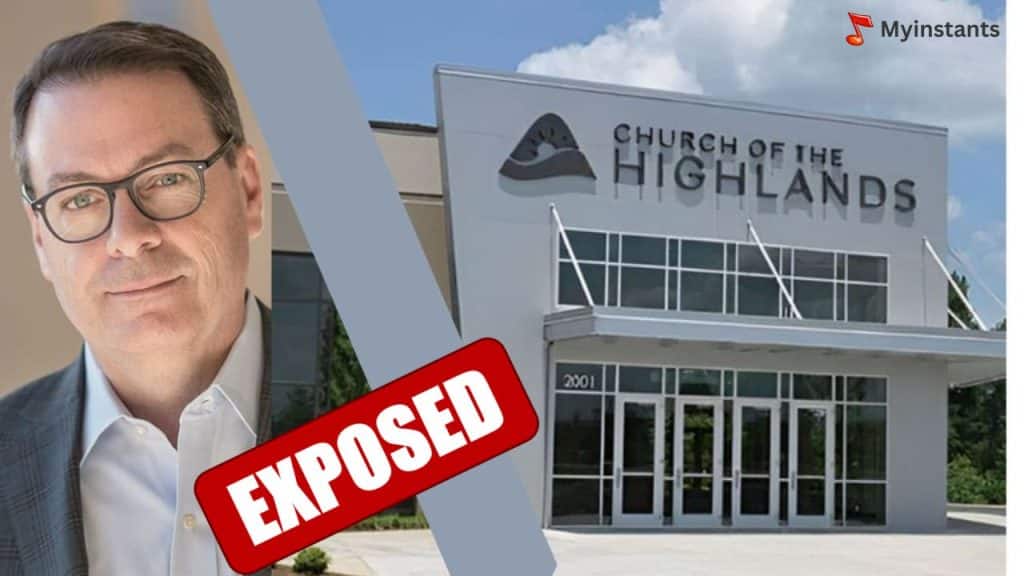
Church Of The Highlands is one of the largest and fastest-growing churches in the United States, with multiple campuses and a massive following.
However, behind its polished image and impressive numbers lies a dark truth that needs to be exposed. In recent years, the Church Of The Highlands has come under scrutiny due to controversies surrounding its founder and lead pastor, allegations of financial misconduct, and cult-like behaviour.
This blog post will delve into the details and reveal the truth behind the Church Of The Highlands Exposed Of The Highlands, exposing the disturbing realities hidden from the public eye.
Church Of The Highlands Exposed
Church Of The Highlands has come under increasing scrutiny in recent years, raising questions about its operations and practices behind the scenes.
Concerns have been raised about the lack of accountability within its leadership team, leading to unilateral decisions that affect the church’s direction and its congregation.
Additionally, there have been numerous reports of financial opacity, with critics claiming that the church does not provide sufficient transparency regarding its expenditures, donations, and overall financial health.
Accusations of cultivating a cult-like atmosphere have also surfaced, where dissent is discouraged, and conformity is enforced through various means, creating an environment that some former members describe as controlling and manipulative.
Moreover, the church’s rapid expansion and aggressive acquisition of property have been questioned, with some community members feeling that it prioritizes growth over genuine community engagement and spiritual development.
These issues combined paint a troubling picture of the Church Of The Highlands, challenging its public persona and raising important questions about its internal practices.
Leadership and Governance Structure
The governance structure of the Church Of The Highlands has often been a focal point of contention and curiosity among its critics and members alike.
At the core of the church’s leadership is a model that places significant power and decision-making authority in the hands of a small leadership team, including the founder and senior pastor.
This centralized approach to governance has led to concerns over the need for checks and balances, which is critical to maintaining accountability within any large organization.
Critics argue that this structure can lead to decision-making that benefits the leadership rather than the congregation or community.
Furthermore, a transparent process for electing leaders or congregational input into critical decisions must be transparent. This contrasts with the practices of many other religious organizations that strive for a more democratic and inclusive approach.
While this governance model is efficient for rapid decision-making and growth, it raises questions about the inclusivity and representativeness of the church’s leadership, especially regarding how it reflects the diverse membership.
Financial Transparency and Use of Funds
One of the primary concerns regarding the Church Of The Highlands is its approach to financial transparency and allocating its funds. Despite being a non-profit organization with tax-exempt status, there is a growing unease over how the church discloses its financial activities to its congregation and the public.
Detailed financial reports, which could illuminate the specifics of income sources, expenditures, and charitable giving, are notably scarce. This lack of transparency fuels skepticism about how donations are utilized, especially given the church’s significant real estate investments and expansion projects.
Critics argue that without clear and open financial statements, it’s difficult to ascertain whether the funds are being used in a manner that aligns with the church’s mission or primarily for organizational growth and asset accumulation.
This opacity has led to calls for the Church Of The Highlands to adopt more transparent financial practices, including publishing audited financial statements, to restore trust and ensure accountability in its financial dealings.
Criticisms and Controversies Faced
The criticisms and controversies surrounding the Church Of The Highlands have been multifaceted, touching on both its internal operations and its public actions.
A significant source of contention has been the church’s handling of social issues, with some members and external observers accusing it of being too passive or taking stances that have polarized its congregation and the wider community.
Additionally, there have been instances where the leadership’s interactions with political figures and entities raised concerns about the church blurring the lines between religious teachings and political advocacy, leading to debates about the appropriate role of the church in political matters.
The dismissal of staff members over controversial social media posts has also ignited debates over freedom of expression and the church’s stance on social justice issues, further complicating its public image.
These controversies, coupled with the issues of financial and governance transparency previously discussed, have led to a growing chorus of voices questioning the direction in which the Church Of The Highlands is heading and whether it can reconcile its rapid growth and expansion with the core values and principles it professes to uphold.
Community Services and Outreach Programs
Despite the controversies and criticisms facing the Church Of The Highlands, it’s undeniable that the organization has significantly emphasised community services and outreach programs.
These initiatives range from supporting people experiencing homelessness, feeding the hungry, and contributing to disaster relief efforts to more systemic attempts at improving healthcare and education within underprivileged communities.
The church has established numerous partnerships with local nonprofits and agencies to extend its reach and effectiveness in addressing social needs.
Through its “Serve Day,” Church Of The Highlands mobilizes thousands of volunteers to participate in various campus community projects, demonstrating a tangible commitment to social action and benevolence.
Additionally, the church’s small groups often engage in independent service projects, further embedding a culture of giving back among its members.
While these efforts are commendable and have positively impacted many areas, they also raise questions about how these outreach activities align with the church’s internal practices and the broader concerns highlighted about its governance and financial transparency.
The Church’s Stance on Social Issues
Church Of The Highlands has faced praise and criticism for its approach to social issues. The church advocates for a faith-based perspective on family, life, and community service, often emphasizing traditional values.
However, it has been critiqued for what some see as a lack of engagement or progressive stance on contemporary social justice issues, including racial equality, LGBTQ+ rights, and economic disparity.
While the Church Of The Highlands participates in community outreach and services, detractors argue that its public statements and actions on these pivotal social issues sometimes appear noncommittal or overly cautious, reflecting a desire to maintain a broad appeal.
This cautious approach has led to debates within and outside the church community about the role of faith organizations in advocating for social change and the importance of taking definitive stances on issues affecting their congregation and society.
The church’s handling of these matters underscores the complex challenge of balancing doctrinal beliefs with social advocacy in today’s diverse and often polarized social landscape.
Member Experiences and Testimonies
Member experiences and testimonies about the Church Of The Highlands offer a mosaic of perspectives, ranging from heartfelt appreciation to profound disillusionment. Some members recount transformative spiritual journeys, praising the church for its vibrant community and impactful teachings.
These positive accounts often highlight personal growth, a sense of belonging, and inspiration from the church’s services and outreach initiatives.
On the flip side, there are stories from individuals who express dissatisfaction and concern over their experiences.
Critics point to a perceived pressure to conform, a lack of deep spiritual engagement, and discomfort with the church’s handling of finances and governance.
Others describe a journey from initial enchantment to eventual estrangement, citing disagreements with the church’s stance on social issues or feeling marginalized within the congregation.
These testimonies, together, paint a complex picture of the Church Of The Highlands, suggesting that while it has been a source of support and community for many, it has also been a place of contention and disillusionment for others.
The Digital Presence and Media Strategy
Church Of The Highlands has adeptly leveraged digital platforms to expand its reach and influence, establishing a robust online presence that complements its physical campuses.
Through live streaming services, a user-friendly website, and active social media channels, the church has created a virtual community that mirrors the engagement and vibrancy of its in-person gatherings.
This strategic embrace of digital media facilitates more comprehensive access to its sermons and spiritual content and is a critical tool for marketing and communication.
By harnessing the power of the internet and social media, the Church Of The Highlands effectively disseminates its messages and attracts new members, transcending geographical limitations.
However, this digital expansion has its challenges. The church’s online activities have also been a conduit for criticism and dissent, amplifying voices of discontent and disseminating alternative narratives to its official positions.
In navigating the digital landscape, the Church Of The Highlands encounters both the opportunities of reaching a global audience and the challenges of managing its public image in an increasingly connected and scrutinizing online world.
Frequently Asked Questions
Is the Church Of The Highlands truly non-profit?
Church Of The Highlands is registered as a non-profit organization, which means it is exempt from federal income tax under the Internal Revenue Code.
How does the church use its donations?
Donations are purportedly used for various purposes, including operational costs, community outreach, and expansion projects. However, there have been calls for greater financial transparency.
Can anyone attend Church Of The Highlands services?
Yes, the church welcomes all individuals to attend its services, regardless of their background or beliefs.
Has the Church Of The Highlands taken a stance on political issues?
The church has faced scrutiny over its interactions with political figures and the perception that it mixes religious teachings with political advocacy, though it claims to stay apolitical in its teachings.
How can members get involved in decision-making at the church?
The church’s centralized governance structure limits congregational involvement in decision-making processes, focusing decision-making authority within a small leadership team.
Conclusion
In wrapping up, it’s clear that the Church Of The Highlands, with its vast influence and extensive community services, is a complex entity facing significant scrutiny.
Balancing commendable outreach efforts with controversies surrounding governance, financial transparency, and social stances presents a multifaceted challenge.
As this church moves forward, it must address these concerns transparently, fostering an environment of openness and accountability.
Only time will tell if it can navigate these complexities to maintain trust and fulfil its mission in an ever-evolving societal landscape.



